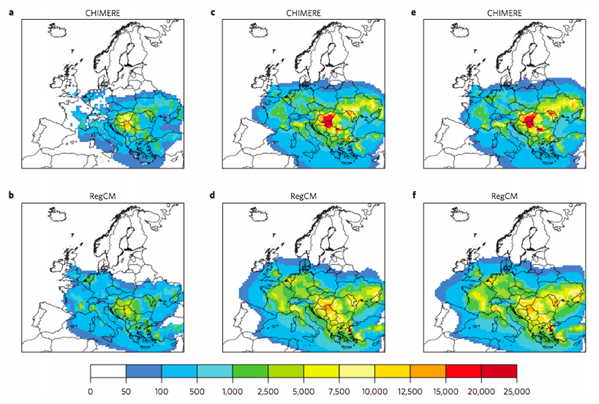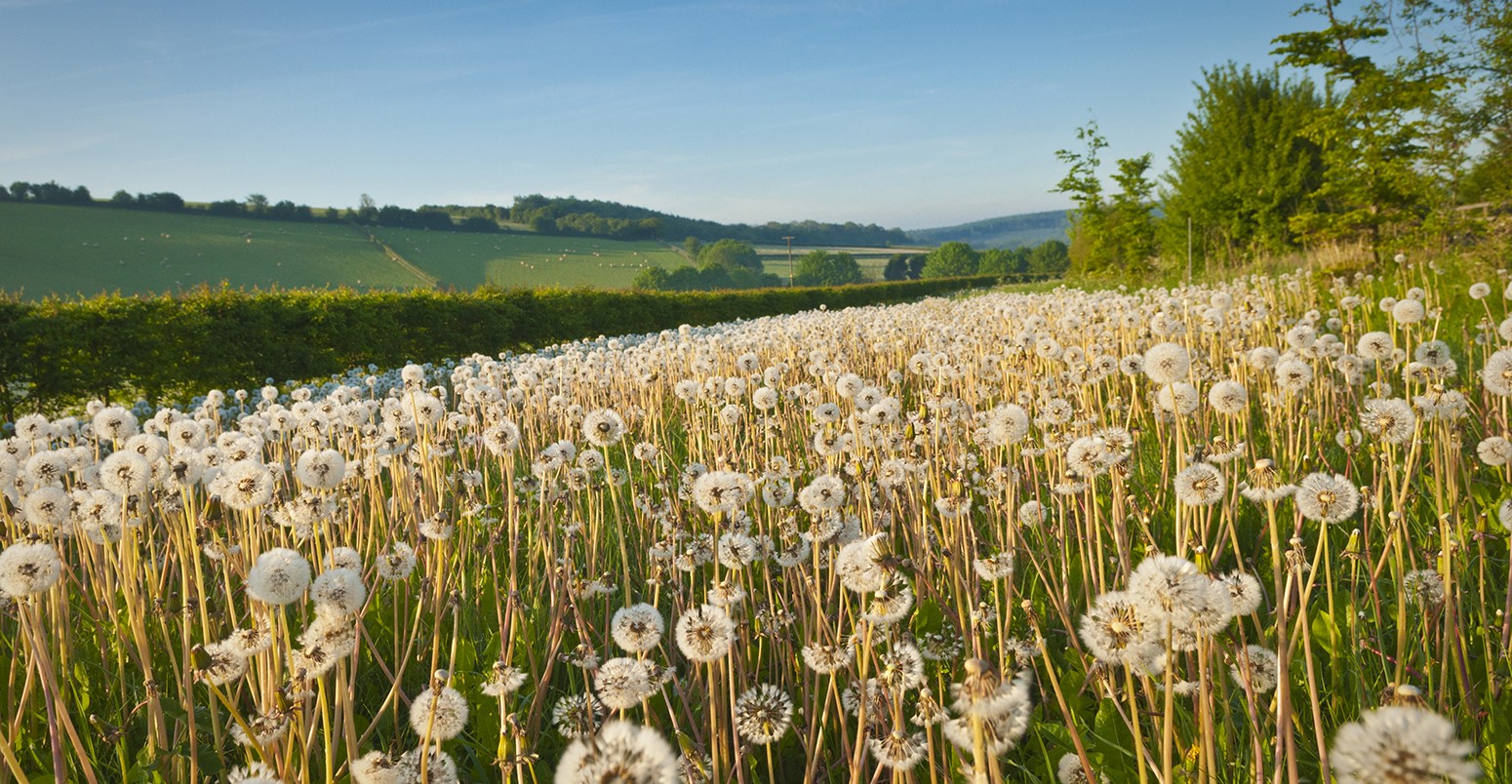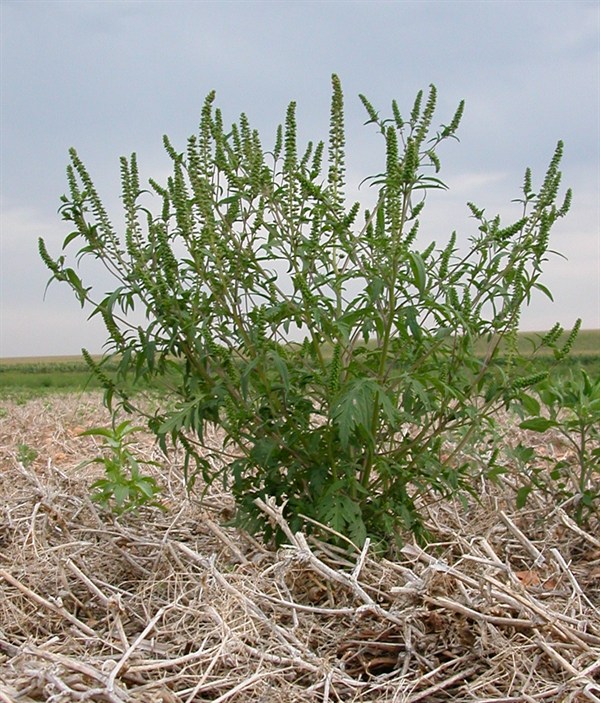Climate change could bring new hay fever misery to the UK
Robert McSweeney
05.25.15Robert McSweeney
25.05.2015 | 4:00pmWith spring in full swing, there’s much to enjoy about sunny days and warmer temperatures. But this time of year also brings the hay fever season, when itchy eyes and sneezing beset around 18 million people in the UK.
Now a new study suggests a warming climate means worse may be on the way. The culprit is the common ragweed, an invasive species that’s expanding across Europe with unpleasant consequences for hay fever sufferers.
What is ragweed?
Common ragweed is a green, leafy plant that is native to North America but has taken root in Europe, Australia, East Asia and South America since the end of the 19th century.
Ragweed typically grows around farmland and construction sites, and along riverbanks and railway embankments. It flowers through the summer and into the autumn and produces large amounts of pollen, which can be carried by the wind from one country to another.
The UK is currently a bit too cold for the plant to flourish. And while ragweed pollen is blown over from Europe, it’s rarely in high enough quantities to cause hay fever symptoms.
But that could be set to change. New research, published in Nature Climate Change, estimates the amount of ragweed pollen in the air across Europe will be four times higher by 2050. And it could even be as much as 12 times higher, the study shows.
This means a lot more ragweed pollen reaching the UK, the researchers say.
The study is part of a Europe-wide project on how changes in climate, land use and air pollution will affect the spread of pollen and its impact on human health.
Climate change scenarios
Combining models of ragweed growth with projections of climate change, the researchers looked at how warmer temperatures might boost the spread of the ragweed plant and the amount of pollen it produces.
You can see their results in the figure below. The left-hand maps show the average spread of pollen in the current climate, and the middle and right-hand maps show how that spread increases over the UK for a moderate and high climate change scenario by 2050, respectively.

Historical and future average annual ragweed pollen counts in grains per cubic metre. Top and bottom rows of maps have the results from two different ragweed growth models. Maps show pollen counts for: a & b) historical period (1986-2005), c & d) 2050 under a moderate climate change scenario (RCP4.5), and e & f) 2050 under a high climate change scenario (RCP8.5). Source: Hamaoui-Laguel et al. (2015).
Hay fever
Ragweed pollen packs quite a punch for hay fever sufferers, Dr Catherine Pashley from the Institute for Lung Health at the University of Leicester, who wasn’t involved in the study, tells Carbon Brief:
The threshold for clinical symptoms is believed to be as low as 1-3 ragweed pollen grains per cubic metre of air – compared to other well known pollen allergens such as grass (50 grains) and birch (80 grains).
And ragweed produces a lot of pollen – a single plant can yield up to a billion grains in just one season.
This potent combination means ragweed causes hay fever and can even trigger asthma attacks. In a separate study of northern Italy, for example, ragweed became the number one cause of hay fever symptoms within 20 years of first appearing, Pashley says.
Impact of climate change
There are several factors that contribute to the projected spread of ragweed pollen, the study says.
The researchers ran their ragweed growth models with and without the impact of climate change. The results show about a third of the pollen increase is caused by humans inadvertently spreading ragweed into new areas, says Thomas Haynes, Ecological Director at NatureBureau , the research consultancy that collected the ragweed data used in the study.
This is how ragweed first crossed oceans to reach other continents, with seeds carried in crops and farming machinery, Haynes tells Carbon Brief.
But changes in climate and land-use are responsible for the other two-thirds, he says:
Once climate change scenarios are considered then it is possible for ragweed to spread into areas that are currently too cold for the species. Higher carbon dioxide levels also benefit ragweed growth and pollen production, so all in all this is not good news.
Pollen season
Rising temperatures mean that ragweed starts flowering earlier in the year, the researchers say. Their model results show that flowering could start up to 10 days earlier by 2050.
And the pollen season would last longer too. Ragweed usually stops flowering with the arrival of frosts in autumn, but warmer conditions mean the timing of frosts will get pushed further back, the researchers say.
As ragweed produces its pollen in late summer and autumn, its arrival could extend hay fever misery in the UK.
At the moment, the hay fever season starts with tree pollen in spring, which affects about a quarter of hay fever sufferers here. This is followed in summer with grass pollen, which 95% of hay fever sufferers are allergic to. But the arrival of ragweed could bring another dose, just as people expect their symptoms to end.
Hay fever sufferers may well start to notice the increase in pollen even before ragweed plants establish themselves in the UK, says Haynes:
It is likely that large ragweed populations established in other parts of Europe will be able to spread their pollen to the UK, and possibly cause the flu-like hay fever symptoms observed in other parts of Europe.
Once established, the ragweed plant is hard to shift, the paper says. Its seeds can survive for a long time, it’s quick to resprout after being cut back and it can even evolve resistance to herbicides, the researchers say.
And controlling the ragweed invasion will become even more difficult with the boost to growth provided by climate change, they conclude.
Main image: Dandelion field and idyllic rural farmland in the distance.
Hamaoui-Laguel, L. et al. (2015) Effects of climate change and seed dispersal on airborne ragweed pollen loads in Europe, Nature Climate Change, doi:10.1038/nclimate2652



